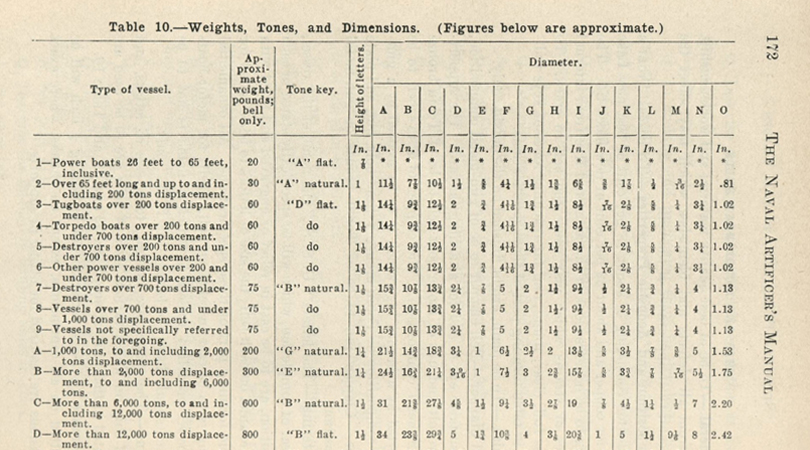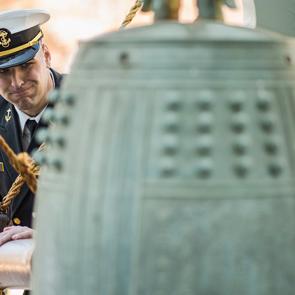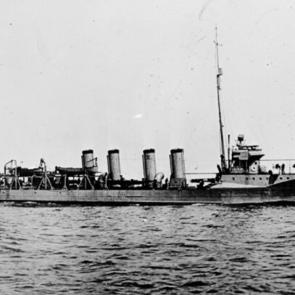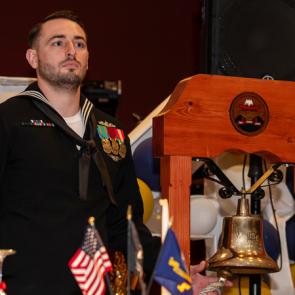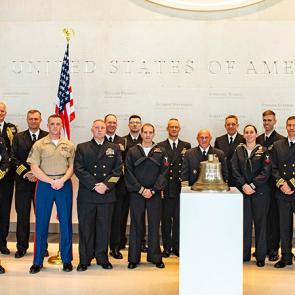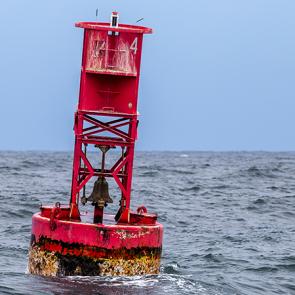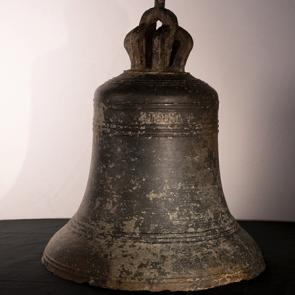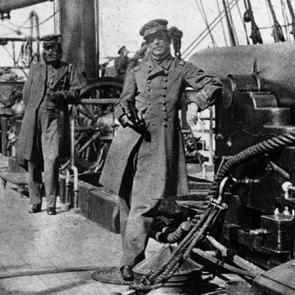The making of a ship’s bell
The U.S. Navy details the specifications for casting a ship’s bell commensurate with the size and service of a given vessel. The bell’s proportions, weight, tone, and inscription are all predetermined by the naval ship’s class to maintain consistency across the fleet of carriers, cruisers, destroyers, submarines, hospital ships, and other vessels.
A balanced and homogenous composition of copper, zinc, and tin is meant to yield bright acoustic properties and resilience to the elements. The metal is to be free from internal stresses or strains, which may affect the serviceability of the bell or cause it to crack. Its tone should be full, clear, and round, and able to resound well beyond the limits of the bow and stern. The finish is to be plain, free from defects and blemishes, and polished on the outside only. To maintain a spotless and brilliant appearance, sailors routinely buff and polish the ship’s bell.

Image: Illustration of a U.S. Navy Motor Boat Bell, circa 1918, from The Naval Artificer's Manual. Courtesy: Naval History and Heritage Command.
An inscription on the bell, cast at the time of founding or engraved after, will include the letters “U.S.S.” (United States Ship) followed by the name of the vessel and the year of commissioning. If a vessel is not named, the bell is to bear the letters “U.S.N.” (United States Navy) only. The size of the letters in relation to the bell follow approved standards. Ships within the Royal Navy use the initialism H.M.S. instead, signifying His or Her Majesty's Ship.
The Navy stipulates that any variation to set bell measurement standards must not exceed ¼ inch. The weight of a bell is permitted limited variation as well, with a tolerance of only 2 percent above or below the specified weight in a 600- or 800-lb. bell. The tolerance is greatest in the smallest of bells, allowing for not more than 5 percent above or below the specified weight in bells weighing 20, 30, or 60 lbs.
While the U.S. Navy has contracted dedicated bell foundries for bells before, many of the largest shipbuilding companies and suppliers to the Department of Defense cast their own bells for new ship commissions.
Section image: Detail from The Naval Artificer’s Manual delineating appropriate bell weights, tones, and dimensions for U.S. Navy ships and motor boats of different sizes. Courtesy: Naval History and Heritage Command.
*The appearance of U.S. Department of Defense (DoD) visual information does not imply or constitute DoD endorsement.






